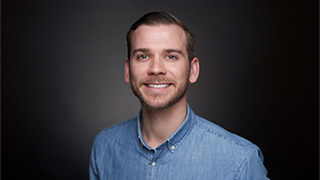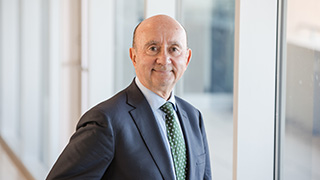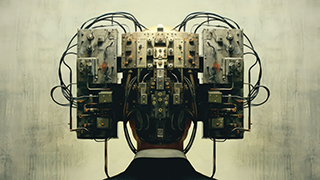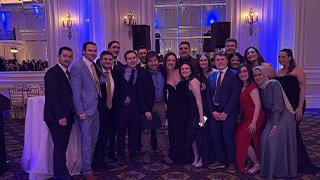Insights from the Impact Talk on Digital Transformation
Thursday, February 2nd, 2023
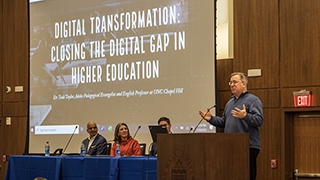
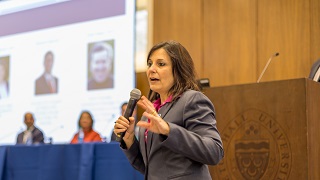
Through introductory talks by each panelist, and an engaging, audience-driven Q&A session moderated by Seton Hall University’s Associate Chief Information Officer, Paul Fisher, several key takeaways emerged.
Keeping Pace with Consumers
A recurring theme of the day’s event was the pace at which technology is evolving. With 24/7 connectivity as the byproduct of the COVID-19 pandemic, there has been a monumental shift in users’ expectations of digital experiences. Tapestry’s CIO, Ashish Parmar, explained that his organization uses the term “Futurespeed” to describe the speed in which the business operates to meet the expectations of consumers. Similar to the commercial world, higher education institutions must find ways to harness the power of technology to deliver more personalized and user-focused digital experiences while still maintaining the traditions of operating in a physical space. In the era of technology consumerization, organizations who adopt a digital-first mindset invest in infrastructure and processes that promote growth and sustainability in new digital ecosystems.
Preparing the Future Workforce
Digital transformation has had a profound impact on the job market, leading to both the creation of new job opportunities and the displacement of traditional roles. With the increasing use of automation, AI, and other digital technologies in mind, AWS’s higher education expert, Dr. Jennifer Sparrow, discussed the growing need for higher education institutions to rethink the fluencies that students will need to succeed in the workforce of the future. Digital fluency ranks among the most important, extending beyond basic literacy to enable students to become innovators in knowledge creation.
Integrating Technology into the Curriculum
The integration of technology into teaching and learning can greatly enhance a student’s experience and provide new opportunities for collaboration, creativity, and innovation. Adobe Pedagogical Evangelist, Dr. Todd Taylor, introduced the concept of an integration success formula that weighs equitable access of technology across user groups and disciplines with the critical need to train both faculty and students on how to leverage the available tools. In essence, universities must implement approaches that grant students and faculty access to technology, and simultaneously create hands-on learning experiences that encourage problem-solving, communication, data analysis, design thinking, and the ability to learn from failure.
Challenges and Concerns
As technology becomes more advanced and complex, so do the concerns about its safe and ethical usage. NYU’s Global CISO, Richard Sparrow, discussed digital transformation from a cybersecurity standpoint. He explained that the rate of technological innovation is accelerating just as quickly for cybercriminals leading to more intricate and targeted attacks. As such, the challenge for higher education becomes integrating technology and security measures that protect sensitive information and systems from cyber threats, while still allowing for experimentation, failure, and innovation.
The Future of AI
Technology will continue to emerge and evolve, creating new opportunities and challenges for organizations. In recent months, the emergence of ChatGPT has sparked a discussion around the preservation of academic integrity. AI-based technologies are still in their early stages, so their future applications are yet to be determined. Universities must therefore be flexible and adjust their strategies to educate students on the wider implications of AI and how to utilize these tools in responsible and ethical ways.
The panel discussion provided valuable insights into how technology is transforming the way students learn, research, and engage with their professors and peers. This successful event generated meaningful conversations on higher education’s role in the future of technology.
Ways to Get Involved in Seton Hall's Digital Transformation
Teaching, Learning and Technology Roundtable
Seton Hall University is committed to remaining a leader in digital transformation
through continuous evaluation and implementation of new technological initiatives.
As such, the well-established Teaching, Learning and Technology Roundtable (TLTR)
is dedicated to helping Seton Hall University navigate issues and topics related to
instructional technology and make recommendations for the future direction of the
University’s digital transformation plan. Sponsored by the Office of the Provost and
the Department of Information Technology, the TLTR is composed of representatives
from academic and administrative areas of the University, including faculty, administrators,
and students. Learn how to become a member of the TLTR.
Provide Your Feedback
TLTR’s Mobile Computing Committee has developed a survey to gather information about
how students and faculty use technology at Seton Hall. This important survey will
provide a better understanding of the evolving needs of the University’s constituents
and help to steer the future of technological initiatives, policies, and practices
at Seton Hall University. The survey will be deployed in the coming weeks, and we
ask that all eligible Seton Hall community members share their feedback.
Infuse Technology into the Classroom
The Teaching, Learning and Technology Center administers several programs aimed at
supporting faculty and student use of technology and infusing technology appropriately
into the curriculum. TLTC’s Instructional Designers offer support and consultation
to faculty in the evaluation, selection, implementation and use of instructional technology
and serve as a primary point of contact for all faculty technology projects. Instructional
support for teaching and learning initiatives are based on pedagogical models to enhance
specific academic environments. Connect with an Instructional Designer to learn more.
Categories: Science and Technology


